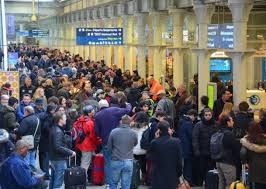How Modern Economics Erodes Social Resilience
In systems design, a key way to create resilience is via duplication or even redundancy: for any crucial component, there is a counterpart which can hum  into action if the main one fails. This principle is important in sustainability too: organic farms have several kinds of crops, and livestock, which mean that if one fails, there are several other income sources.
into action if the main one fails. This principle is important in sustainability too: organic farms have several kinds of crops, and livestock, which mean that if one fails, there are several other income sources.
Now contrast this with ‘progressive’ business or government policy, where redundant facilities are cut out to minimise current costs, and large-scale production of a single output is believed to be more efficient. It may be efficient in a narrow, short-term sense, but it’s very poor on adaptability.
My thoughts on this were fuelled by the closure of the Channel Tunnel in June by a wildcat strike of Calais dock workers. Our eco-friendly plan to travel by train to Germany that week were thrown into chaos. There are far fewer ferry routes to Europe now, but the new jugular artery to Britain via the Tunnel can be easily blocked.
These same issues arise for communities, businesses, and individuals. At all levels, we need to understand where we are most vulnerable, and start to identify what ‘redundant’ capacity would improve our resilience, and what it would cost. The days of local or national government thinking this through are long gone: we have to be willing to invest our own funds to provide this.
Another example is food and fuel: the stocks carried in our modern, ‘efficient’ supply chains are minimal. So it’s not alarmist for households or communities to ensure they have some backup stocks locally, so that bad weather, strikes or other normal hazards of everyday life can be managed.
The National Grid has just announced that the safety margin between supply and demand for electricity will reach a ten-year low this winter: in other words, limited resilience to ‘exceptional’ bad weather, power station failures, etc. Time for individuals and communities to take notice!

